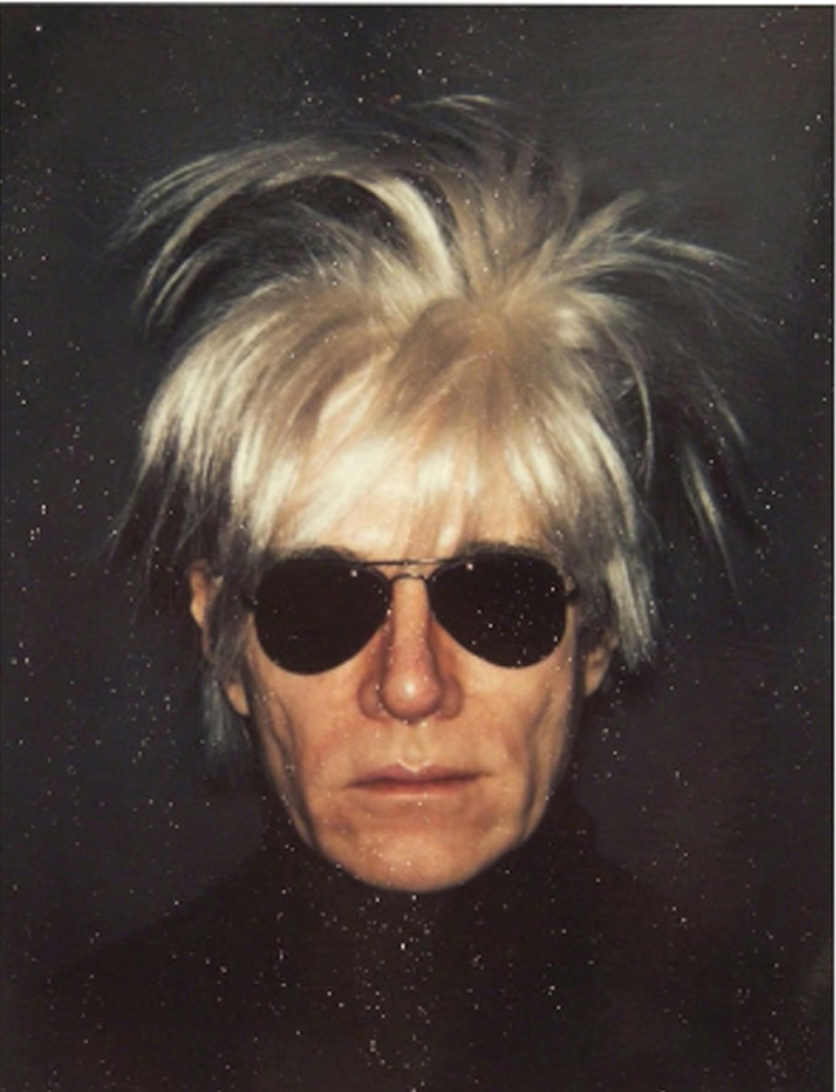
Steve Shapiro, Andy Warhol and the Velvet Underground, Los Angeles, Calif., 1966.
Courtesy of the A. Gallery, Paris and the Centre Pompidou-Metz.
Pop Art icon Andy Warhol‘s legacy is indisputable.
His melding of high- and lowbrow, with the tendency to appropriate celebrity and consumer culture and an innovative approach to film-making, has influenced countless artists both before and after his death in 1987. In a 2012 review, New York Times art critic Roberta Smith gives credit where it is due: “He eliminated a long-accepted filter between his various art forms and reality, letting the nation’s tarnished soul shine through in all its cheap, materialistic, radiant, often violent, implicitly erotic glory.”
Two recent museum exhibitions presented Warhol’s pervasive influence: “Pop Life: Art in a Material World” at the Tate Modern in 2009 and “Regarding Warhol: Sixty Artists, Fifty Years” at the Metropolitan Museum of Art in 2012. Warhol’s work was exhibited alongside those artists his work impacted. As art critic Peter Schjeldahl wrote in his review of the Met show in the New Yorker, Warhol “heralded historical collapses” of “elite culture into mass culture, of creativity into commerce, and, with a metaphysical shudder, of reality into appearances of reality.”
It is with these collapses that Warhol was extremely prescient with regard to the internet and social media. How we interact and share ourselves online follows the artist’s modes of interaction with friends, employees, and clients. Bartholomew Ryan, a curator at the Andy Warhol Museum, told artnet News that it was the artist’s “understanding of intimacy” that fueled his collaborative work at The Factory, which carried over into subsequent ventures later in his career. Warhol “dismantled hierarchies of information,” Ryan said. It’s almost as if he knew how culture would evolve on- and offline. Not bad for a guy who was incredibly shy, right?
There are the obvious disciples: Jeff Koons, Takashi Murakami, Damien Hirst, and Sturtevant. But here are ten more artists influenced by Warhol.
John Cale standing in front of his video installation, 2009. Photography by Prudence Cuming © The British Council.
1. John Cale
Cale cofounded the Velvet Underground with bandmate Lou Reed; the Velvets were the purported house band of the Factory in the 1960s, and their influence continues today. Reed and Cale wrote Songs for Drella, their tribute album to Warhol, after their friend’s death.
The musician and artist represented Wales at the Venice Biennale in 2009.
Deborah Kass, Double Double Yentl (My Elvis), 1993. Photo courtesy of Paul Kasmin Gallery
2. Deborah Kass
Kass’s Warhol Project is an obvious homage to its namesake, but her work builds and expands on themes inherent in Warhol’s art.
Rudolf Stingel, Untitled (2012). Courtesy the artist and Gagosian Gallery. © Alessandro Zambianchi.
3. Rudolf Stingel
Stingel follows Warhol’s approach to abstract painting – challenging conventional methods.
Thomas Hirschhorn, Abstract Relief: Archaeology (2000). Photo courtesy of Arts Connected.
4. Thomas Hirschhorn
“I love Andy Warhol with a love that is exclusionist and egoistic. It is not respect or admiration that I have for Warhol and his work, it is love.”
Gerhard Richter, Wand (Wall) (1994) Photo: Courtesy Sotheby’s
5. Gerhard Richter
Richter’s paintings exude a similar textural richness to Warhol, in addition to a certain “openness.”
Kippenberger on the Theme of Fucking, Boozing and Selling (1982). Photo courtesy of Tate/© Estate Martin Kippenberger/Galerie Gisela Capitain, Cologne.
6. Martin Kippenburger
The rebellious German artist understood the importance of branding oneself, and the power of persona.
Maurizio Cattelan, 1967 ‘boomerang’ desk by Maurice Calka, (2014). Photograph by Maurizio Cattelan and Pieropaolo Ferrari
© deste foundation and toiletpaper
7. Maurizio Cattelan
Cattelan’s work encapsulates the collusion of high and low culture, with a subversive twist.
Stella Vine, Priscilla (2014). Photo courtesy of The Cob Gallery.
8. Stella Vine
She paints celebrities in a style all of her own, but admits that “over the years and I guess as a teenager I must have had some influence of [Andy] Warhol…” Celebrity portraiture can suggests a kind of immortality, especially for subjects who have met tragedy (e.g., Princess Diana, Amy Winehouse, and Kurt Cobain), just like Warhol’s Marilyn series.
Polly Apfelbaum, Las Vegas Room (2009). Photo courtesy of the artist.
9. Polly Apfelbaum
Her bright, graphic pieces and use of motifs speak to Warhol’s earlier role as a commercial artist. Prints and pattern figure heavily in her practice.
Mike Kelley, Deodorized Central Mass with Satellites (1991/1999). Photo courtesy of MoMA PS1.
10. Mike Kelley
Just as Warhol found inspiration in common objects, Kelley used found materials to craft his plush sculptures. He draws from popular culture and a youthful Americana, with toys and comics.